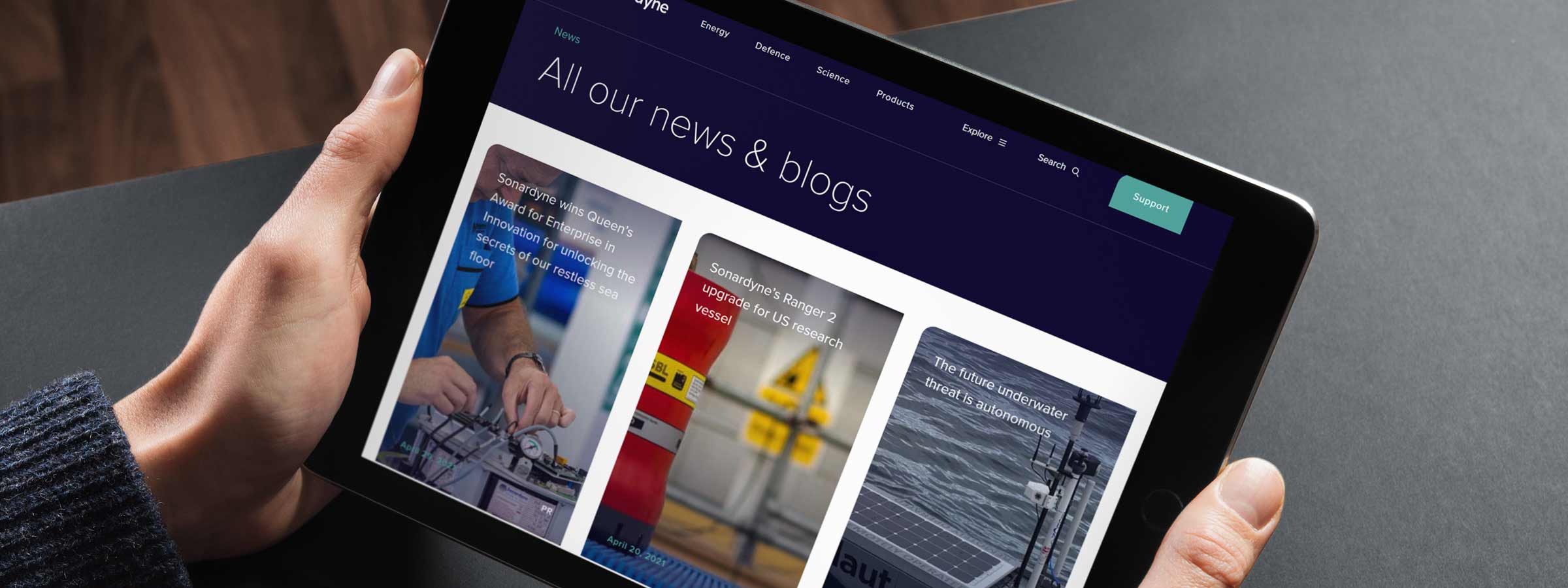Ocean science company, Sonardyne International Ltd., has announced that its deep water acoustic tracking technology, Ranger 2, has been installed on one of the most modern vessels in the German research fleet, the Maria S. Merian. The announcement was made at the annual meeting of the Partnership for Observation of the Global Oceans (POGO), which this year is hosted by the Scripps Institution of Oceanography, USA.
Delivered through Sonardyne’s in-country agent, Scholz Ingenieur Büro GmbH, the system was chosen as a replacement for the vessel’s existing third-party Ultra-Short BaseLine (USBL) acoustic equipment to enable science teams to precisely track the position of deep-water science systems including unmanned robotic platforms and seafloor landers to beyond seven kilometres.
Operated by the German Research Vessels Control Station at the Institute of Geology, University of Hamburg, the Maria S. Merian is equipped to conduct sea bottom, water column and atmospheric observations in the Mediterranean, North Atlantic and, thanks to its ice-breaking reinforced hull, the subpolar Norwegian Sea.
A key factor in the institute’s decision to select Ranger 2 for the Maria S. Merian was the system’s extensive track record in delivering fast, accurate and repeatable positioning for science operations in all water depths and operating conditions. Central to this has been German scientists’ first-hand experience of the Ranger 2 systems fitted to the UK’s research vessels, including the RRS James Cook, which has been a long-term user of Sonardyne’s USBL technology.
As part of the upgrade, the Maria S. Merian has been fitted with Sonardyne’s GyroUSBL instrument which incorporates a USBL transceiver and high-grade inertial navigation sensor in the unit. This combination maximises precision by eliminating common sources of USBL system error such as lever arm offsets, pole bending and ship flexing. During science missions, it will be deployed and recovered using a Sonardyne deployment machine and used to track Wideband Sub-Mini 6+ transponders attached to scientific equipment in the water.
Speaking about the contract, Paul Griffiths, Sales Manager for Sonardyne in the UK said that with within the global science community, Ranger 2 is now firmly established as a key enabler for sustained ocean observations. He added, “We’re delighted that the scientists and crew of the Maria S. Merian have joined the other international research institutes who trust our technology to support their important work.”
Jan Wommelsdorff of Scholz Ingenieur Büro GmbH “This is the first Sonardyne Ranger 2 GyroUSBL to be fitted to a German research ship and is a key technology for enabling the country’s scientists to work in demanding deep sea environments.”
For more information on Sonardyne’s Ranger 2 USBL tracking system click here.
